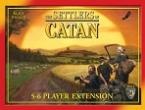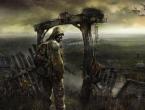Post the first geographical map of the world. History of the geographical map
Traditionally, cloves are found in almost every gingerbread and punch recipe. This spice improves the taste of sauces, as well as meat and vegetable dishes. Scientists have discovered that spicy cloves are an excellent antioxidant and are therefore suitable for strengthening the body's defenses.
Read completelyCategory: Healthy lifestyle
 Ramson (wild garlic) is a kind of harbinger of spring, which is eagerly awaited. This is not surprising, since the tender green leaves of wild garlic are not only a culinary highlight, but also a healthy one! Wild garlic removes toxins, lowers blood pressure and cholesterol levels. It fights existing atherosclerosis and protects the body from bacteria and fungi. In addition to a wealth of vitamins and nutrients, wild garlic also contains the active ingredient alliin, a natural antibiotic with a variety of healing effects.
Ramson (wild garlic) is a kind of harbinger of spring, which is eagerly awaited. This is not surprising, since the tender green leaves of wild garlic are not only a culinary highlight, but also a healthy one! Wild garlic removes toxins, lowers blood pressure and cholesterol levels. It fights existing atherosclerosis and protects the body from bacteria and fungi. In addition to a wealth of vitamins and nutrients, wild garlic also contains the active ingredient alliin, a natural antibiotic with a variety of healing effects.
Category: Healthy lifestyle
 Winter is flu time. The annual wave of influenza illnesses usually begins in January and lasts three to four months. Can the flu be prevented? How to protect yourself from the flu? Is the flu vaccine really the only alternative or are there other options? What exactly can be done to strengthen the immune system and prevent the flu in natural ways, you will find out in our article.
Winter is flu time. The annual wave of influenza illnesses usually begins in January and lasts three to four months. Can the flu be prevented? How to protect yourself from the flu? Is the flu vaccine really the only alternative or are there other options? What exactly can be done to strengthen the immune system and prevent the flu in natural ways, you will find out in our article.
Category: Healthy lifestyle
 There are many medicinal plants for colds. In our article you will get acquainted with the most important herbs that will help you cope with a cold faster and become stronger. You will learn which plants help with a runny nose, have an anti-inflammatory effect, relieve a sore throat and soothe a cough.
There are many medicinal plants for colds. In our article you will get acquainted with the most important herbs that will help you cope with a cold faster and become stronger. You will learn which plants help with a runny nose, have an anti-inflammatory effect, relieve a sore throat and soothe a cough.
How to become happy? A few steps to happiness Category: Psychology of relationships
 The keys to happiness are not as far away as you might think. There are things that darken our reality. You need to get rid of them. In our article, we will introduce you to several steps that will make your life brighter and you will feel happier.
The keys to happiness are not as far away as you might think. There are things that darken our reality. You need to get rid of them. In our article, we will introduce you to several steps that will make your life brighter and you will feel happier.
Learning to apologize correctly Category: Psychology of relationships
 A person can quickly say something and not even notice that he has offended someone. In the blink of an eye, a quarrel can break out. One bad word follows the next. At some point, the situation becomes so tense that there seems to be no way out of it. The only salvation is for one of the participants in the quarrel to stop and apologize. Sincere and friendly. After all, a cold “Sorry” does not evoke any emotions. A proper apology is the best relationship healer in every situation in life.
A person can quickly say something and not even notice that he has offended someone. In the blink of an eye, a quarrel can break out. One bad word follows the next. At some point, the situation becomes so tense that there seems to be no way out of it. The only salvation is for one of the participants in the quarrel to stop and apologize. Sincere and friendly. After all, a cold “Sorry” does not evoke any emotions. A proper apology is the best relationship healer in every situation in life.
Category: Psychology of relationships
 Maintaining a harmonious relationship with a partner is not easy, but it is infinitely important for our health. You can eat right, exercise regularly, have a great job and a lot of money. But none of this will help if we have problems in our relationship with a loved one. Therefore, it is so important that our relationships are harmonious, and how to achieve this, the advice in this article will help.
Maintaining a harmonious relationship with a partner is not easy, but it is infinitely important for our health. You can eat right, exercise regularly, have a great job and a lot of money. But none of this will help if we have problems in our relationship with a loved one. Therefore, it is so important that our relationships are harmonious, and how to achieve this, the advice in this article will help.
Bad breath: what is the reason? Category: Healthy lifestyle
 Bad breath is a rather unpleasant issue not only for the culprit of this smell, but also for his loved ones. An unpleasant odor in exceptional cases, for example, in the form of garlic food, is forgiven to everyone. Chronic bad breath, however, can easily move a person toward social offside. This shouldn't happen because the cause of bad breath can, in most cases, be relatively easily identified and eliminated.
Bad breath is a rather unpleasant issue not only for the culprit of this smell, but also for his loved ones. An unpleasant odor in exceptional cases, for example, in the form of garlic food, is forgiven to everyone. Chronic bad breath, however, can easily move a person toward social offside. This shouldn't happen because the cause of bad breath can, in most cases, be relatively easily identified and eliminated.
Heading:
 The bedroom should always be an oasis of peace and well-being. This is obviously why many people want to decorate their bedroom with indoor plants. But is this advisable? And if so, what plants are suitable for the bedroom?
The bedroom should always be an oasis of peace and well-being. This is obviously why many people want to decorate their bedroom with indoor plants. But is this advisable? And if so, what plants are suitable for the bedroom?
Modern scientific knowledge condemns the ancient theory that flowers are inappropriate in the bedroom. It was previously believed that green and flowering plants consumed a lot of oxygen at night and could cause health problems. In fact, indoor plants have a minimal oxygen requirement.
Read completelySecrets of night photography Category: Photography
 So what camera settings should you use for long exposures, night photography, and low light photography? In our article, we have collected several tips and recommendations that will help you take high-quality night photographs.
So what camera settings should you use for long exposures, night photography, and low light photography? In our article, we have collected several tips and recommendations that will help you take high-quality night photographs.
A grandfather and a woman are sitting on a bench near the hut. Grandfather says:
- Look, tourists are coming. Now they will ask for directions.
- How do you know?!
- You see - they took out a map... they are looking at the compass.
History of the origin of cards
(how it was)

It is difficult to say when the first prototype of the map appeared. Apparently, many thousands of years ago, when a person first needed to explain to his fellow tribesmen how to get to a source or cave suitable for habitation. We still draw similar “maps” - diagrams today in order to explain to our interlocutor the location of an object.
The first professional maps arose in Mesopotamia and ancient Egypt. The development of the state associated with trade and the development of new lands would be very difficult without maps.
The first map of the world known to us in the modern sense of the word was compiled by the Greek materialist philosopher Alexander of Miletus (about 610 BC). It depicts the earth as a cylinder surrounded by water. In the 4th century BC.
Aristotle, observing the round shadow of the earth, at the moment of a lunar eclipse came to the obvious conclusion that only a spherical object could give such a shadow. In the Middle Ages, the initiative in the development of geography and cartography passed to the scientists of the East. Abu Reyhan Muhammad ibn Ahmed al Biruni created his own geodesy or determined the boundaries of places to clarify the distances between villages. The situation changed with the beginning of the great era of great geographical discoveries.
Since that time, the ability to determine the coordinates of a geographical object and draw a map of the area has become a common skill for sailors and explorers of new lands. By the end of the 16th century. the entire European part of the continent has already been studied and described in detail, which cannot be said about the Asian part.
Experts note the accuracy with which the maps indicate, amazing for that time: Chukotka, western Alaska, Kamchatka, Sakhalin, China, Mongolia, India. Under Tsar Peter the Great, a state topographic and cartographic service was established in Russia. In the 19th century, there were no unexplored objects left on the world map, with the exception of some islands of the Pacific Ocean, the Arctic and subpolar regions.
The introduction of the metric system and the prime meridian greatly simplified the language of maps. Modern geodesy and cartography are fundamentally different from the science of the past. Satellite navigation systems make it possible to create maps of different scales with extraordinary accuracy. But today, like hundreds of years ago, the good old sextant is indispensable for a navigator and astronomer-geodesist.
P.S.- Sextant (in navigation - sextant) - a navigational measuring instrument,
used to measure the height of the sun above the horizon
in order to determine the geographic coordinates of the area.
- an anecdote about a modern map instead of an epilogue:
The company is going on a planned business trip:
- Is the city big?
- No, 3 megabytes...
And continues to download the map to the phone.
It is impossible to determine when a person made the first map. It is only known that many millennia BC, man already knew the area around him well and knew how to depict it on sand or tree bark. These cartographic images served to indicate migration routes, hunting places, etc.
Many more hundreds of years passed. People, in addition to hunting and fishing, began to engage in cattle breeding and agriculture. This new, higher level of culture was reflected in the drawings and plans. They become more detailed, more expressive, and more accurately convey the character of the area.
A very valuable ancient drawing of a hunting ground in the North Caucasus has survived to this day. This engraving was made on silver around 3 thousand years BC. e., i.e. This cultural monument of the inhabitants of the ancient Caucasus was found by scientists during excavations of one of the mounds on the bank of the river. Kuban near the city of Maykop.
In the ancient world, the compilation of geographical maps reached great development. The Greeks established the sphericity of the Earth and its dimensions, introduced cartographic projections, meridians and parallels into science.
One of the most famous scientists of the ancient world, geographer and astronomer Claudius Ptolemy, who lived in Alexandria (at the mouth of the Nile River) in the 2nd century, compiled a detailed map of the Earth, which no one had ever created before.
This map depicts three parts of the world - Europe, Asia and Libya (as Africa was then called), as well as the Atlantic Ocean, Mediterranean and other seas. The map already has a degree grid. Ptolemy introduced this grid to more correctly depict the spherical shape of the Earth on the map. The rivers, lakes, peninsulas of Europe and North Africa known at that time are shown quite accurately on Ptolemy’s map.
If you compare Ptolemy’s map with a modern one, it is easy to notice that areas located far from the Mediterranean Sea region, that is, known to Ptolemy only by rumor, received fantastic outlines.
What is especially striking is that Asia is not depicted in its entirety. Ptolemy did not know where it ended in the north and east. He also did not know about the existence of the Arctic and Pacific oceans. Africa continues on the map to the South Pole and turns into some kind of land connecting to Asia in the east. Ptolemy did not know that Africa ends in the south and is washed by the ocean. He also did not know about the existence of independent continents - America, Antarctica and Australia. Ptolemy depicted the Indian Ocean as a closed sea, into which it was impossible to sail on ships from Europe. And yet, in the ancient world and in subsequent centuries, until the 15th century, no one made a better map of the world than Ptolemy.
The Romans widely used maps for administrative and military purposes; they compiled road maps.
During the Middle Ages, the achievements of ancient science were forgotten for a long time. The Church entered into a fierce struggle with scientific ideas about the structure and origin of the world.
In schools, fables were taught about the creation of the world by God in six days, about the global flood, about heaven and hell. The idea that the Earth was spherical was considered “heretical” by churchmen and was strictly persecuted. The idea of the Earth took on a completely fantastic form. In the VI century. The Byzantine merchant - monk Cosmas Indicoplov depicted the Earth in the shape of a rectangle.
The main type of maps is becoming rough, far from reality and lacking a scientific basis, “monastery maps”. They indicate the decline of cartography in medieval Europe. During this period, many small closed states arose in Europe. With a subsistence economy, these feudal states did not need connections with the outside world.
By the end of the Middle Ages, trade and navigation began to develop in European cities, and art and science began to flourish.
In the XIII-XIV centuries. In Europe, a compass and marine navigation charts, the so-called portolans, appeared.
These maps depicted the coastline in detail and very accurately, while the interior parts of the continents remained empty or were filled with pictures from the life of the peoples inhabiting them.
The era of great geographical discoveries created the conditions for the rise of cartographic science: sailors needed a good, truthful geographical map. In the 16th century more correct maps appeared, built in new cartographic projections.
Geographic maps include a lot of scientific material. If you compare different maps of the same area and study them, you can get a very detailed picture of that area.
Therefore, geographical maps are a huge source of knowledge. But a map can become a real source of knowledge only when you have a certain amount of geographical knowledge.
Anyone with knowledge of geography and the ability to read a map can accurately understand the terrain depicted on it, rivers, mountain lakes, high or low hills, cities and villages, railways.
The creator of the first geographical map is considered to be the ancient Greek scientist Anaximander. In the VI century. BC e. he drew the first map of the then known world, depicting the Earth as a flat circle surrounded by water.
In the 3rd century. BC e. The ancient Greek scientist Eratosthenes wrote the book "Geography", using the terms "geography", "latitude" and "longitude" for the first time. The book consisted of three parts. The first part outlined the history of geography; the second describes the shape and size of the Earth, the boundaries of land and oceans, the climates of the Earth; in the third, the land is divided into parts of the world and sphrageds - prototypes of natural zones, and a description of individual countries is also made. He also compiled a geographical map of the populated part of the Earth.
In the II century. n. e. The ancient Greek scientist Claudius Ptolemy summarized and systematized the knowledge of ancient scientists about the Earth and the Universe in his eight-volume work “Guide to Geography,” which during the 14th centuries enjoyed such great popularity among scientists, travelers, and merchants that it was reprinted 42 times.
Ptolemy's "Geography" contained, as already mentioned, all the information about the Earth available at that time. The maps included with it were very accurate. They have a degree grid. Ptolemy compiled a detailed map of the Earth, the like of which no one had ever created before. It depicted three parts of the world: Europe, Asia and Libya (as Africa was then called), the Atlantic (Western) Ocean, the Mediterranean (African) and Indian Seas. The rivers, lakes and peninsulas of Europe and North Africa known at that time were depicted quite accurately, which cannot be said about the lesser-known areas of Asia, which were reconstructed based on fragmentary, often contradictory, geographical information and data. 8000 (eight thousand) points from the Atlantic to the Indian Ocean were plotted according to coordinates; the position of some of them was determined astronomically, and most were plotted along routes. The map is extended in an easterly direction. Half of the map is devoted to famous countries. In its southern part there is a huge continent called the Unknown Land.
The first map of Russia, called the “Big Drawing,” was compiled, as scientists suggest, in the second half of the 16th century. However, neither the “Big Drawing” nor its subsequent supplemented and modified copies have reached us. Only the appendix to the map has survived - “The Book of the Large Drawing”. It contained interesting information about the nature and economic activities of the population, the main roads and main rivers as routes of communication, about “cities” and various defensive structures on the borders of the Russian state.
The first globe was created by the German scientist Martin Beheim. His model of the Earth was published in I492, the year when Christopher Columbus set off to the shores of fabulous India by the western route. The globe depicted Europe, Asia, Africa, which occupy about half of the entire surface of the Earth, and no North and South America, Antarctica, or Australia. The Atlantic and Pacific oceans are presented as a single water basin, and in place of the Indian Ocean are the East Indian Ocean and the Stormy South Sea, separated by a vast archilag of islands. The outlines of the oceans and continents are far from reality, since the creation of the globe was based on information based on the ideas of ancient geographers and data from Arab and other travelers who visited the countries of the East, India and China.
The first geographical atlas was created in I570. All navigators of the 16th and early 17th centuries. used this atlas, which consisted of 7o (seventy) large format maps, accompanied by explanatory text.
Its creator is the famous Dutch cartographer Abraham Ortelius. Each map of his atlas is carefully engraved on copper and provided with a degree grid. On the map of the hemispheres, the continents of the Old and New Worlds were depicted in all details, but their outlines did not yet correspond to reality. One of the maps is dedicated to the Southern continent (Magelania




